Nanoforce Technology Ltd. Assists in the Development of Materials and Processes for Industry
Submitting Institution
Queen Mary, University of LondonUnit of Assessment
Electrical and Electronic Engineering, Metallurgy and MaterialsSummary Impact Type
TechnologicalResearch Subject Area(s)
Chemical Sciences: Macromolecular and Materials Chemistry, Physical Chemistry (incl. Structural)
Engineering: Materials Engineering
Summary of the impact
Nanoforce Technology Ltd. is a spin-out company wholly owned by QMUL,
active in the field of
polymeric and ceramic materials. Bridging the gap between academic
research and industrial
applications, Nanoforce has
done business with over 100 companies since 2008, providing the key
research expertise and specialist facilities to enable the development of
new materials and
commercial products, including Sugru® a room temperature
vulcanizing silicone rubber, Zelfo® a
self-binding cellulose material, and BiotexTM a range of
high-performance yarns, fabrics and pre-
consolidated sheets based renewable resources such as PLA and natural flax
fibres. Nanoforce
has been promoting the development and commercialisation of spark plasma
sintering (SPS) since
2006, which resulted in Kennametal recently opening the first commercial
SPS facility in the UK to
produce advanced ceramic armour. Nanoforce's clients have included large
multi-nationals such
as DSM, Dow Chemical, General Electric, SABIC, L'Oreal, Shell, Sibelco,
governmental agencies
such as Defence Science and Technology Laboratory (Dstl), and a large
number of SME's.
Underpinning research
The creation of Nanoforce Technology Ltd. was the result of Queen Mary's
long history in
fundamental and applied research in new materials and processes. Over the
years' research
activities at QMUL in the area of both structural and functional materials
have focused on
polymeric, ceramic and composite materials for a multitude of applications
including lightweighting,
healthcare, protection, sensors, and energy conversion and storage.
Queen Mary has a long history in polymer and composite research, and a
long and distinguished
track record working in the general areas of polymer and rubber physics,
composite processing,
failure prediction, as well as component design. In recent years a large
research activity has been
focused on nanocomposites (Peijs, Busfield, Bilotti), where a major effort
is around the processing
of multi-functional polymeric or elastomeric materials based on nanoclays
and carbon nanofillers
[1,2], with interesting mechanical, electrical, thermal and optical
properties. Besides
nanocomposites a significant research activity is in the area of polymer
nanofibres (Barber, Peijs).
Nanospider® technology is used for the creation of electrospun
nanofibrous materials for a wide
variety of applications such as filtration, textiles, medical and
protection, with links to Dstl. Other
more distinct areas of research are those of micro- and nano-encapsulation
(Sukhorukov) and
photoembossing for micro- and nanopatterning (Bastiaansen).
The team has also extensive research expertise in the area on natural
fibres, cellulose and
nanocellulose (Peijs) to create fully biobased materials with interesting
mechanical and functional
properties [3]. MRI researchers (Peijs, Bilotti) have a strong track
record in the field of bio-
degradable and/or bio-based polymers (e.g. PLA, PHB, PCL) and composites
[4]. More recently
the use of self-binding nanocellulose networks (from plants or through
bacterial fermentation), as a
method to make 100% cellulose-based binder-free materials has been
explored [5].
Ceramics have always been a major part of the materials research
portfolio at Queen Mary, and
interest in this field remains as strong as ever. Over recent years
ceramic research has broadened
to cover functional ceramics as well as the more traditional area of
structural ceramics. Research
has recently been focusing on nanostructured ceramics and thermoelectrics.
For the production of
these materials the team (Reece, Yan) has unique spark plasma sintering
(SPS) facilities at
Nanoforce that allow densification of nanoceramic powders to be achieved
with minimal grain
growth. The group is also involved in the development of conductive
ceramic nanocomposites
using carbon nanotubes or graphene as a conductive filler [6]. Here the
rapid sintering by SPS can
preserve the structure of such carbon nanostructures, opening up the
possibility to create multi-
functional ceramic materials with improved mechanical, electrical and
thermal properties.
The application and impact of the team's research was significantly
enhanced by the creation of
Nanoforce Technology Ltd. in 2005. Nanoforce was set up as a spin-out from
QMUL with £3.1m of
funding from the DTI and the London Development Agency (LDA) through the
Micro- and Nano
Technology (MNT) competition and was created to bridge the gap between
academic and industry-
led research to enable the development of new materials or improvement of
commercial products
using MRI's knowledge-base. Nanoforce is an independent research and
knowledge centre and
the MRI's `Portal to Industry', with a focus on advanced materials
processing. It provides a service
that industry often fails to find within academia as its set up, using
full-time employed researchers,
allows academics to conduct applied research on industrial timescales
(months) rather than
academic timescales (years) through PGRs or PDRAs. This has proven to be
highly valuable to
industry. Moreover, it gives QMUL academics greater flexibility to conduct
R&D projects (either
collaborative, bilateral, or confidential short term contracts) with
industry rather than through PhD
or Postdoc programmes.
References to the research
1. Bilotti E, Zhang R, Deng H, Quero F, Fischer HR, Peijs T. Sepiolite
needle-like clay for PA6
nanocomposites. Comp. Sci. Techn. (2009), 69(15-16):2587-95.
2. Bilotti E, Zhang R, Deng H, Baxendale M, Peijs T., Fabrication and
property prediction of
conductive and strain sensing nanocomposite fibres, J. Mat. Chem. (2010),
20(42): 9449-55.
3. Berglund, L.A. and Peijs, T., Cellulose biocomposites - From bulk
moldings to nanostructured
systems, MRS Bulletin (2010), 35(3): 201-207.
4. Goutianos S, Peijs T, Nystrom B, Skrifvars M, Development of flax
fibre based textile
reinforcements for composite applications, Appl. Comp. Materials (2006),
13(4): 199-215.
5. Soykeabkaew N, Sian C, Gea S, Nishino T, Peijs T., All-cellulose
nanocomposites from
bacterial cellulose. Cellulose (2009), 16(3): 435-44.
6. Porwal, H, Tatarko P, Grasso, S, Khaliq, J, Dlouhy, I., Reece, MJ,
Graphene reinforced alumina
nano-composites, Carbon (2013), 64: 359-369.
Details of the impact
Over the REF period Nanoforce has supported over 100 companies through
contract research and
provided key research expertise to enable the development of new materials
or improvement of
existing products. As part of their remit to the LDA, it has also provided
business support to over
200 businesses in the London area. Since 2008, staff working through
Nanoforce have generated
£2,78m of income, which accounts to 17% of the MRI's total grant awards.
Research at Nanoforce has played a pivotal role in creation and
improvement of businesses (incl.
Sugru®, Zelfo® and BiotexTM). It has
supported and contributed to over 100 academic papers.
Twenty-one people have worked for Nanoforce over the 8 years of its
existence, and many more in
other partnering companies as a result of their growth through interaction
with Nanoforce. Through
their experience gained, Nanoforce researchers have progressed to other
research based jobs
such as Head of Research at AFC Energy, and Advanced Manufacturing
Engineer at Rolls Royce.
Over 55 PhD students have been trained at the facility and the company has
presented in over 60
national and international events. It has participated in over 30
knowledge-based collaborations,
whilst providing vocational training to over 300 individuals.
Customers of Nanoforce include multi-nationals such as Dow Chemical,
General Electric, SABIC
Innovative Plastics, DSM, L'Oreal, Shell, Transitions Optical, Sibelco,
governmental agencies such
as Dstl, and a large number of SME's. Nanoforce has also entered into a
number of exclusive
partnerships for technology exploitation with industry. For example,
conductive polymer fibres for
smart textiles are developed in partnership with CNT producer Nanocyl S.A.
(Belgium), while in the
field of thermolelectrics a partnership agreement exist with European
Thermodynamics. In the area
of high performance fibres, Nanoforce has recently become the preferred
research partner for
DSM Dyneema (Netherlands). Dyneema is a world-leader in high strength
polymer fibres and they
have selected Nanoforce as their main research partner because of its
expertise in fibre
technology and its ability to conduct research in an industrial facing
environment under full
confidentiality. Nanoforce has helped develop several products as well as
transferring knowledge
acquired from research. Prime examples of these are the, Sugru®,
Zelfo®, BiotexTM and
Kennametal case studies discussed below.
Sugru® : FormFormForm is a young and
vibrant SME based company in East London. Its main
technology (Formarol) is a room temperature vulcanizing silicone rubber,
which is specially
formulated for handle-ability and cure kinetics. Sugru®,
the brain child of FormFormForm's CEO
Jane Ni Dhulchaointigh, is the first commercial product based on this
technology. It resembles
modelling clay but sticks to almost anything and dries to a tough, rubbery
finish. It allows single
users to personalise, fix and modifying objects, devises or goods. Over
285,000 people in 138
countries are currently using it to make their stuff work better, or as
the company puts it, Sugru
`Hacks things better'. In 2008, because of its expertise in polymers and
rubbers (Busfield, Peijs,
Bilotti), Nanoforce was asked to assist in the development of Sugru.
Supported by a TSB
Feasibility Award, Nanoforce helped to create the silicone material that
would be sticky but would
also cure at room temperature. It provided advice on optimal processing
and production methods,
and the formulation of the current materials is a direct result of work
performed in the Nanoforce
labs. In November 2009, with a minute budget, FormFormForm started to
produce a small batch of
products. These first 1,000 packets of Sugru, which took a month to make,
sold out in six hours to
customers in 21 countries and where an instant hit. In 2010 TIME Magazine
listed Sugru alongside
the iPad as one of the top 50 inventions of that year, and in 2012 Jane Ni
Dhulchaointigh won the
`London Design Entrepreneur Award'. Currently Sugru is receiving massive
attention by different
medias, particularly social media, thus bypassing traditional routes to
market. Nanoforce
involvement in the development of Sugru had direct economic impact through
increased sales and
jobs created with FormFormForm now employing 30 people. It had sales of $1
million in 2011 and
doubled that figure in 2012. It opened an office in America in 2011, the
firm's biggest single market.
Zelfo® : Zelfo is a materials system that
is based entirely on nanofibrillated cellulose fibres, where
fibres mechanically interlock and self-bind via hydrogen bonding. Hence,
no further additives or
resins are required to promote fibre bonding, resulting in a sustainable
and recyclable bio-based
alternative to ones using synthetic resin systems, such as wood fibre
plastic (WFP) or medium
density fibre board (MDF). Zelfo was initially developed and patented by
Zellform GmbH (Austria)
in the 1990s. However, it needed a collaborative R&D program funded by
the DTI (REFLECT,
2007-2010), involving QMUL's Nanoforce, InterfaceFLOR, Omodo (the original
patent holders),
and other industrial partners to successfully industrialize the concept.
Within this collaborative
project, Peijs' his expertise in cellulose and nanocellulose [3-5], led to
optimized environmentally
friendly processing schemes for Zelfo panels. Minimizing energy and
resources (water/fibre), up-
cycling of cellulose waste streams, and shrinkage of the material while
drying were issues that
were tackled. Significant environmental impact was achieved through the
successful development of a
number of mixed fibre products which utilised cellulose waste and recycled
paper. Dr. Luca Achilli, at
the time working at Nanoforce under the supervision of Peijs, moved in
2009 to InterfaceFLOR as
an Innovations Project Manager to further develop the product. In 2011 Zelfo Technology GmbH
was created to commercialise the technology, and with a view to accelerate
industry take up an IP
technology transfer to BASF (Germany) took place in 2013, while in the
same year Interface Inc., a
world leader in sustainability, also acquired a shareholding of the
company. In September 2012,
Zelfo Technology and House of Hemp (South Africa) formed a manufacturing
alliance to up-cycle
cellulose waste to produce binder-free, formaldehyde free, products for
the building industry in
South Africa. The plant will produce a range of products to serve the
building market. Zelfo has
been awarded a number of prestigious prizes. In February 2011, Zelfo
Technology won two
prestigious `Rushlight Awards' for environmentally responsible products.
In March 2011 Zelfo was
voted `Biomaterial of the year 2011' by the Nova Institute. In April 2012,
Niche Snowboards
(featuring Zelfo) was awarded the ISPO (leading sports business network in
Munich, Germany)
`Eco Snowsport Product of the year' for their freestyle snowboard models.
BiotexTM: Composites Evolution is a young SME
that since 2010 provides innovative, sustainable
materials to the composites industry. The current Biotex
range now being commercialised by
Composites Evolution are a direct result of materials developed through
the DTI project COMBINE
(2007-2010), together with project partners like Netcomposites, Springdale
Natural Products, John L
Brierley, Sam Weller and Sons, and Tilsatec. The Biotex family includes a
range of high-performance
natural reinforcement yarns, fabrics (woven and non-crimp) and
preconsolidated sheets suitable for
composite applications. Standard grades include pure jute and flax
fabrics, flax/PP, and flax/PLA
commingled fabrics. Compared to traditional natural fibre reinforced
plastics based on non-wovens
these materials provide improved performance, easy processing and weight
savings. They are suitable
for semi-structural and decorative applications in sectors such as
automotive, construction, marine,
sports and consumer goods. Biotex uses a unique Twistless Technology to
ensure a high degree of
fibre alignment, impregnation and performance, based on research insights
obtained by Peijs [4] in an
earlier EU FP5 TEXFLAX project (2001-2003). Within the COMBINE project
Peijs and team were
responsible for developing optimized yarn and composite processing
technologies and property
evaluation. The widespread use of these materials can have significant
environmental impact as these
materials can save weight, and are based on renewable resources. The
research had direct economic
impact as Composites Evolution currently employs five fulltime employees.
Its turnover in 2012 was
£150,000 and has doubled annually since its start in 2010, and is
projected to sustain this growth for
the coming 4-5 years, with the company moving into a new building within
the next year. Automotive
parts based on Biotex are currently under evaluation by a whole range of
car manufacturers and have
been approved by Jaguar Land Rover for their next generation vehicles. The
material has been
successfully introduced in the sports and leisure market including
snowboards by Canadian producer
Magine, skis and canoes, often
for its superior vibrational damping characteristics. Other markets under
development are in furniture and consumer electronics such as laptop and
smartphone cases.
Kennametal Sintec : Nanoforce set up the first spark plasma
sintering (SPS) furnace in the UK in
2006 (Reece). It has been promoting the development and commercialisation
of the SPS
technology by working with several companies in the fields of
thermoelectrics, ferroelectrics and
structural ceramics and composites. Kennametal
Sintec Ltd in South Wales, have just opened the
first commercial SPS in the UK as an outcome of working with Nanoforce and
Dstl to establish a
UK on-shore capability to produce advanced ceramic armour. It involves a
£2m joint investment by
Kennametal and Dstl, and has already created one new job.
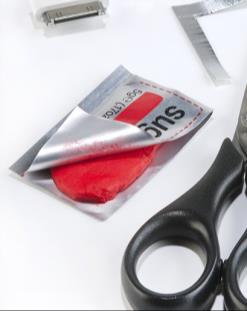
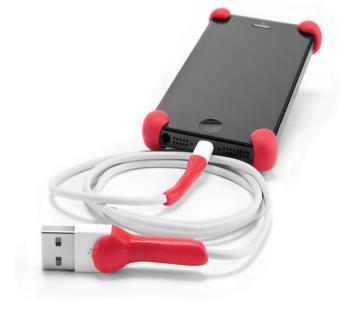

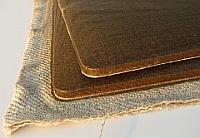
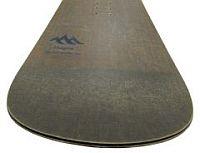
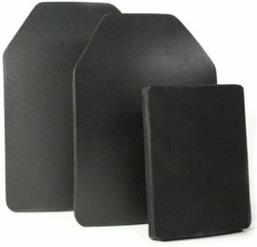
Nanoforce has assisted in the development of a wide range of
commercial products (from top left
to bottom right): Sugru® a new self-setting
rubber for fixing, modifying and improving stuff; Panel
products made from Zelfo® based on 100%
renewable or recycled cellulose fibres; BiotexTM
natural reinforcement yarns, fabrics, preconsolidated sheets and
Magine's snowboard; and SPS
technology for the development of Kennametal's ceramic armour.
Sources to corroborate the impact
- Research Manager at FormFormForm Ltd.
- Research Manager at Interface Europe Ltd.
- Managing Director at Composites Evolution Ltd.
- Research Manager at Kennametal Ltd.